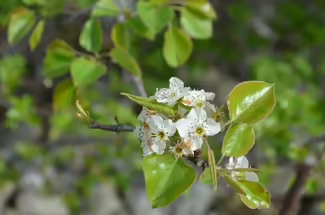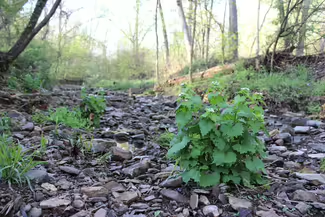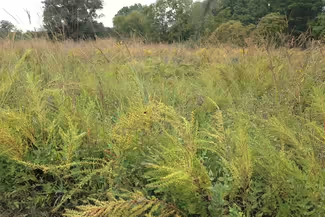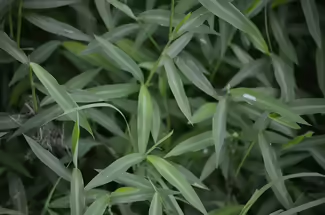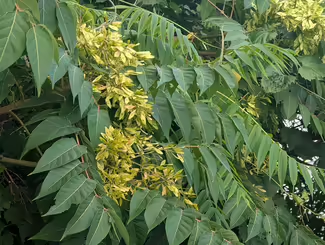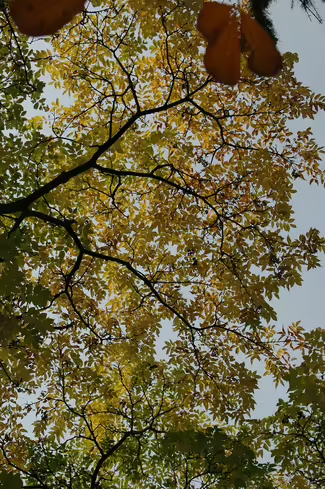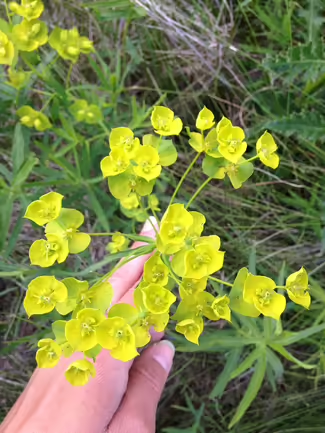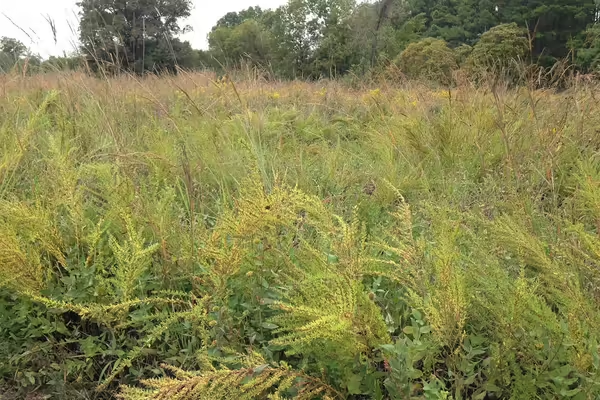
SPRINGFIELD, Ill. — The forests and prairies of Illinois have a new line of defense against harmful non-native plants. On Oct. 1, the Illinois Department of Natural Resources added nine more invasive plants to the list of species that are illegal to buy, sell, distribute, or plant in Illinois, including tree of heaven, garlic mustard, and Callery pear.
Invasive species are non-native plants, animals, and insects that spread quickly. Once they take hold, they are difficult to remove and can have long-lasting, harmful economic and environmental impacts on natural areas, communities, and agricultural fields. Invasive plants are a serious threat to the long-term health of our natural ecosystems, said Chris Evans, University of Illinois Extension forestry and research specialist.
“Invasive plants can crowd out native species, reduce wildlife habitat and forage, change the soil chemistry, and even limit the growth and regeneration of native trees,” said Evans, who serves on the Illinois Invasive Species Council, which recommended the additions. “It is important to recognize these species are harmful to Illinois and to take steps to reduce their impact.”
Eight plants are regulated immediately through the update to the Illinois Exotic Weeds Act (525 ILCS 10): tree-of-heaven, garlic mustard, leafy spurge, sericea lespedeza, Japanese stiltgrass, Amur corktree, black swallowwort, and pale swallowwort. The policy will take effect for Callery pear trees on Jan. 1, 2028, allowing a phase-out period for growers to reduce their stock of planted trees.
Legal regulations are a crucial tool that can help limit the spread and negative impacts of invasive species.
“The recent change to the Illinois Exotic Weed Act allows IDNR to more easily add species that are harmful to our natural areas and wildlife,” said IDNR plant ecologist Phil Cox. “This will be an important tool to help stop the spread of new invasive plants.”
The list of 34 plants already included poison hemlock, kudzu, teasels, amur honeysuckle, and buckthorn. The act does not regulate the possession of these plants or require the removal of existing plants. The plants can also continue to spread naturally. Find the full list of regulated invasive plants on Illinois Extension’s invasive species website at go.illinois.edu/InvasivePlantSpecies.
The new species were recommended after being reviewed by the Illinois Invasive Species Council, which includes stakeholders from state and local governments, the nursery and landscaping industry, research institutions, and non-profit organizations. Learn more about the Illinois Invasive Species Council at https://dnr.illinois.gov/programs/invasivespeciescouncil.html.
Across the state, Illinois Extension staff and Master Naturalist volunteers work with communities to identify and respond to invasive species by recommending management practices and restoring natural areas. Explore more about invasive species in Illinois and how to manage them at go.illinois.edu/Invasive or connect with Extension staff in your area for management recommendations at go.illinois.edu/NREEstaff.
Photo: Sericea lespedeza is a fast-spreading invasive plant that produces many seeds and releases compounds into the soil that harm other plants. Photo by Erin Garret, University of Illinois Extension.
Media inquiries: High-resolution photos of several of the invasive species are available for media download. For media interviews, contact Emily Steele at easteele@illinois.edu or (217) 265-9231.
Newly regulated invasive plants
- Invasive callery pear trees bloom across Illinois every April and are now spreading into natural areas. It was widely planted starting in the 1950s as a fast-growing popular ornamental tree despite weak branches that break off easily from storms. Photo by Christopher Enroth, University of Illinois Extension.
- An invasive garlic mustard plant grows in a forested creekbed. Large infestations of this low-growing herbaceous flowering plant limit growth and productivity of native plants and threaten the long-term health of forests. Photo by Christopher Evans, University of Illinois Extension.
- Sericea lespedeza is a fast-spreading invasive plant that produces many seeds and releases compounds into the soil that harm other plants. Photo by Erin Garret, University of Illinois Extension.
- Japanese stiltgrass is an invasive warm-season grass spreading across southern Illinois, where it negatively impacts biodiversity, alters nutrient cycling and soil biota, and even changes fire behavior. Photo by Erin Garret, University of Illinois Extension.
- Tree-of-heaven is a fast-growing tree that releases a chemical compound into the soil that limits the growth of other plants. Photo by Christopher Evans, University of Illinois Extension.
- Introduced as an ornamental tree, the shade-tolerant Amur Corktree invades forests and prevents native trees from growing. Photo by Christopher Evans, University of Illinois Extension.
- Invasive leafy spurge is a deep-rooted perennial plant that can thrive in a variety of open spaces and during dry conditions outcompete native plants. Photo by Erin Garret, University of Illinois Extension.
University of Illinois Extension develops educational programs, extends knowledge, and builds partnerships to support people, communities, and their environments as part of the state's land-grant institution. Extension serves as the leading public outreach effort for University of Illinois Urbana-Champaign and the College of Agricultural, Consumer and Environmental Sciences in all 102 Illinois counties through a network of 27 multi-county units and over 700 staff statewide. Extension’s mission is responsive to eight strategic priorities — community, economy, environment, food and agriculture, health, partnerships, technology and discovery, and workforce excellence — that are served through six program areas — 4-H youth development, agriculture and agribusiness, community and economic development, family and consumer science, integrated health disparities, and natural resources, environment, and energy.
